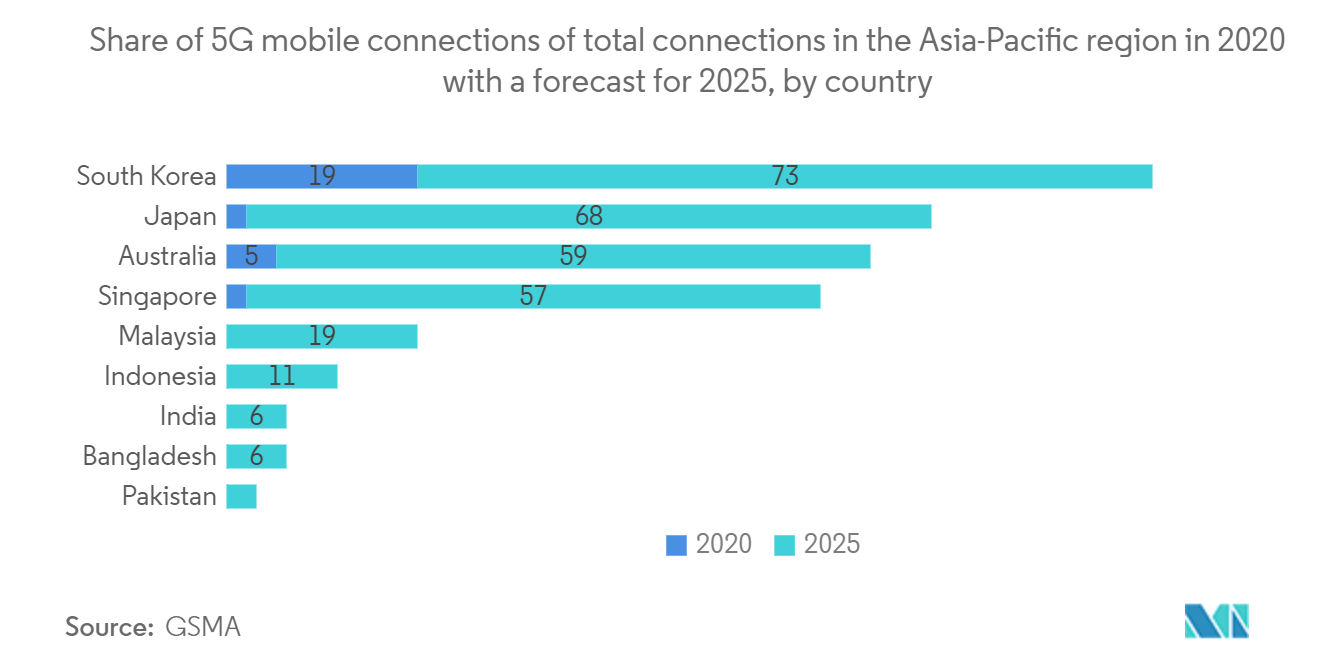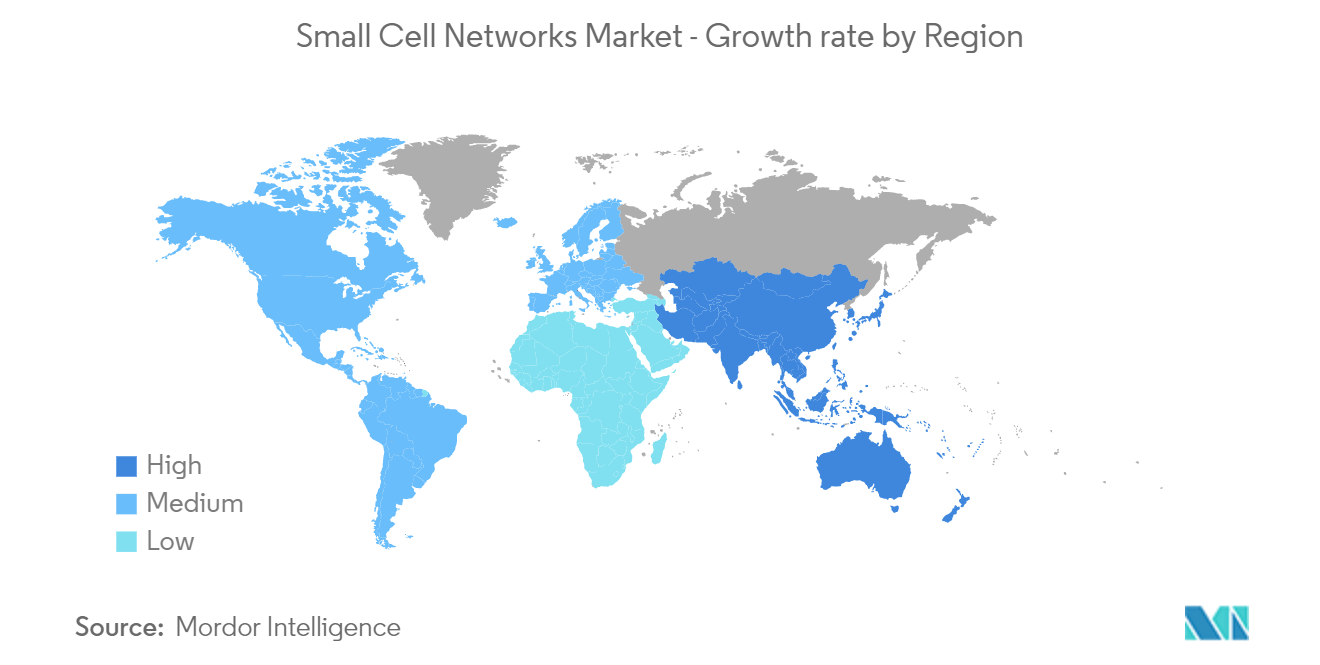Market Trends of Small Cell Networks Industry
This section covers the major market trends shaping the Small Cell Networks Market according to our research experts:
IT and Telecom Sectors Expected to have Significant Share in the Market Landscape.
- The increasing mobile data traffic demands advanced telecommunication networks. The deployment of 5G will facilitate the growing data usage with the required efficiency. The latest network development needs are expected to boost the market for small cell 5G networks over the forecast period.
- In the modern environment, the increased number of connected devices creates the need for increased bandwidth. For instance, according to Cisco Systems Inc., 500 billion devices are expected to be connected to the internet by 2030. Furthermore, 5G telecom companies are focusing on deploying small cells in low-frequency bands to provide customers with increased bandwidth services.
- Also, mobile data traffic is growing exponentially, primarily driven by data-capable devices and high-bandwidth applications (APPs). Vodafone, AT&T, Softbank, and other big operators have already leveraged their macro networks to create differentiation by implementing small-cell solutions. For instance, Verizon has deployed small cells in several U.S. cities, including New York, Chicago, Atlanta, and San Francisco.

Asia-Pacific Expected to Hold the Fastest Growth Rate over the Forecast Period
- Asia-Pacific is set to depict the fastest growth rate because of the increased adoption of mobile devices and various vendor partnerships, with telecom companies introducing and strengthening 5G infrastructure. For example, in January last year, Ericsson, in association with Qualcomm and Asia Pacific Telecom (APT), completed Taiwan's first data call with 5G New Radio Dual Connectivity (NR-DC), collecting APT's spectrum holdings across mid-band (2.6 GHz) and high-band (28 GHz, or mmWave) frequencies. The trial is pivotal in Taiwan's transition to 5G standalone networks, opening several new opportunities and applications. Tests like these portray the scope for 5G small cells to be the future of the telecom industry when it comes to providing infrastructure for the same.
- Asia Pacific's constantly increasing mobile data traffic will strongly support the small cell network industry. For instance, in January last year, Datareportal reported 4.95 billion internet users worldwide. Also, as estimated by Cisco, the region is expected to have 2.6 billion internet users by the end of the year. As we correlate the facts stated by the two sources, Asia-Pacific dominates the overall share of users worldwide. Cisco also mentioned that China would lead the world in terms of the total number of home spots, followed by the US and Japan. The region's constantly increasing mobile data traffic will strongly support the small cell network industry.
- In March last year, ZTE, AIS, and Qualcomm Technologies, Inc. announced the world's first 5G NR-DC (New Radio Dual Connectivity) field demonstration, achieving a peak downlink speed of 8.5 GB/s and a peak uplink speed of 2.17 GB/s with a single mobile device in Thailand. The key band frequencies fell in the spectrum between 2.6 GHz and 26 GHz. This collaboration incorporates two critical 5G frequency bands, Sub-6 and 5G mmWave, as part of the cooperative effort to improve Thailand's 5G network's capabilities and expand the 5G application space.
- Recent developments through alliances among chief market players indicate the strong prospects of further development in the small cell and 5G telecom industries, highlighting the transition from 4G to 5G. For instance, in association with TPG Telecom, Nokia placed Asia-Pacific's first live Femtocell in a live network, keeping TPG's enterprise customers in focus. The "plug and play" nature of the Nokia Smart Node provides high quality, reliability, and low latency deliverables in terms of high-speed 4G and 5G connectivities.

